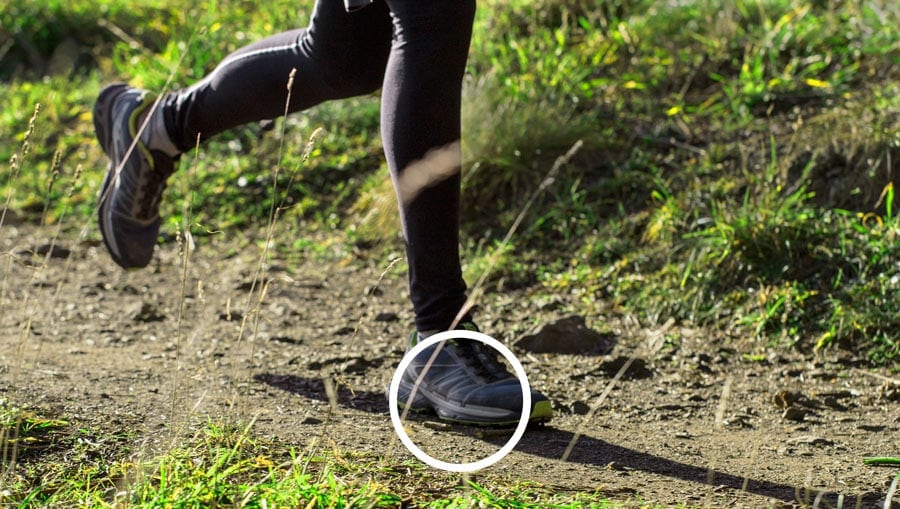Whether you're running for fun or want to improve your PR (personal record), speed training can help you become a faster, stronger and more efficient runner. You'll find a wide variety of philosophies to help you get faster, so you need to narrow it down to a few that can work for you. These three training techniques are ones that are especially effective at improving your speed:
- Add speed workouts: From tempo runs to "fartleks," these workouts can help you run faster.
- Focus on form and technique: Good form can help prevent injuries and increase your running efficiency.
- Build strength: Increase your power with strength exercises.
Your first step, as it is with any new training program, is to consider your health and fitness level. If you have any concerns, consult your physician. After that, you can train solo, but taking some classes, joining a running club or finding a coach or trainer usually helps you progress faster. Plus, it's often a lot more fun. If you're new to running, read our tips on how to get started running.
Find a Running Class or Club at REI
You can also get technique help from trail-running classes and clubs:
Add Speed Workouts

Many of the best runners make speed workouts, on or off the track, a mainstay of their training. The reason? You don't get faster without running fast.
Who should do speed workouts? Any runner interested in running faster should incorporate speed training into their training plan. If you're a novice runner, however, consider starting slowly. Concentrate initially on building endurance and mileage, then move on to incorporate speed workouts into your training.
How does increasing your lactate threshold help you run faster? You've probably heard the term "lactate threshold." During any run, your body produces lactate. On an easy run, your body keeps up with the lactate production and converts it to glycogen to be used as energy. But, as you run harder and faster, your body produces more lactate; if you run too fast or for too long at a certain pace, your body meets its lactate threshold where it can't keep up with the production and your performance can decline, leading to fatigue.
By training at a pace that brings you close to your lactate threshold, you can potentially raise that threshold, which can help you maintain a faster pace over a longer distance. Speed workouts are one good way to work on increasing your lactate threshold.
Different Types of Speed Workouts
There are many different formats of speed workouts and we'll discuss some options below. The length and intensity of your workout will depend on your experience and fitness level as a runner.
General guidelines for speed workouts:
- Warm up for 5 minutes with dynamic stretches or easy laps
- Cool down for 5 minutes when you're done
- Limit the number of speed workouts you do in a week
- If you're not feeling it, listen to your body and stop
Strides: This drill can be done on or off the track. To run strides on the track, accelerate during the straight sections ("sprint the straights") and run at an easy pace on the curves. Aim for four complete laps around the track. If you don't have access to a track, find a road, trail or other straightaway where you can sprint for 10-20 seconds and then walk or run at a slower pace, and then repeat.
Tempo runs: During a tempo run, you run a set distance or time (i.e. a mile or 20 minutes) at a tempo pace, which is typically 20-40 seconds slower than your 5K or 10K race pace. You're trying to train your body to run continuously at a pace that is just below your race pace. Tempo runs are done at about 85 to 88 percent of your maximum heart rate. You're running with effort but you're still able to speak single words.
Sample workout: 5x1 mile at tempo pace.
In this workout, you run a mile at your tempo pace, rest for a minute in between and then repeat 5 times for a total of 5 miles. As you get more experienced, decrease the break between runs until you're doing them with little or no break.
Interval runs are any repetitive distance done at a certain pace. You'll find many different ways to run intervals. At its simplest form, you run for a short distance (i.e. 800 meters), rest and repeat. Below are just a few examples of interval workouts:
- Mile repeats: Run a mile at a fast pace, take a break in between and repeat.
- Mile cut-downs: In this workout, you're cutting down your time so each mile you run is faster than the previous one. Sample workout: Run one mile at a pace that's about 10 seconds slower per mile than your 5K race pace, then rest for about 2 minutes. Run your next mile 10 seconds faster than the previous one, then rest again for 2 minutes. Follow that up with one more mile, again 10 seconds faster than the previous one.
- 400-meter repeats: One lap around a standard-size track is 400 meters and doing multiple laps at this distance with a short rest in between each one is an excellent way to build strength and endurance to increase your speed. To get the most out of the workout, run the laps about 10 seconds per mile faster than your 5K race pace. Aim to do 10-12 400-meter laps with about a 30-second rest in between laps.
Fartlek: This is a Swedish term that means "speed play." The basic idea: Vary your speed and effort during a run so that you're running faster at certain periods and more slowly during other periods. Fartlek workouts can be structured or unstructured, done outside or even on a treadmill. For example, you could run up a hill faster or run faster between trees, blocks or other landmarks.
Ladder workouts: These workouts focus on your explosive and finishing speeds. They're specifically aimed at maximizing your speed and making your running economy and sprinting form more efficient. Because they're fairly strenuous, they're usually recommended for dedicated runners who have been training for a few months. In this interval-style workout, you increase or decrease the time or distance of each repetition. You can tailor the time, distance and pace of each repetition to fit your needs but here's an example. Ladder up and down in the following sequence: 200 meters, 300 meters, 400 meters, 800 meters, 400 meters, 300 meters, 200 meters. Run each distance at an all-out pace and follow each one with two to three minutes of complete rest.
Work on Form and Technique

Poor form and technique can keep you from hitting your top speed. Here are a few key things to think about and work on:
Avoid heel strike: Every time you heel strike (when your heel hits the ground first) it's like you're hitting the brakes. Heel striking not only slows you down, it can also waste energy. Strive for a midfoot strike that keeps your foot directly under your body.
Increase foot turnover: Turnover is the number of steps you take in a minute. To figure out your turnover, count how many times your foot hits the ground in one minute and multiply that by two to get your turnover rate. The magic number you'll hear discussed is 180 steps per minute. (It's pretty common for non-elite runners to have a turnover rate that's slower than that, so don't beat yourself up if yours is less than that.) Also, you don't have to hit 180 exactly, but striving for a faster rate will get you closer to the optimal balance of stride length and frequency, which can improve your efficiency and speed.
Use video analysis: Athletes of all types have long used video footage to help them refine technique and form. Runners can benefit from this, too. Have a friend film you with their smartphone or digital camera, then review the footage and look for ways to improve your technique.
To learn more about form and technique, see our article Trail-Running: Form and Technique Tips.
Strength Train
Strength exercises can help you increase your power when you need it most. For a sample workout that can help you build endurance and strength, read Training Exercises for Running.
Build Explosive Speed with Plyometric Exercise
Plyometric workouts are essentially jump training. Doing plyometric workouts (also called "plyos" for short) are a great way to train your fast-twitch muscles fibers and build your explosive speed. With all plyometric exercises, the idea is to exert your maximum effort in short intervals of time. Here are some examples of good plyometric exercises (you don't have to do all of these). Start by choosing three or four exercises and doing them two or three times per week:

Box jumps (quads, hamstring, calves, glutes): Box jumps train your fast-twitch muscle fibers for quick reaction times. Squat downward and explode up while swinging your arms to leap onto a box that is about one to two feet high. Step down. Do three sets of 10 reps, with one to two minutes of rest between sets.

Skipping (quads, hamstrings, glutes, calves): Skipping helps develop your lower-leg strength and improve explosive speed. Pick a point about 15-20 meters away and skip to it. Focus on propelling your body up and forward. Swing your arms as you skip to warm up your shoulders. Turn around and skip back. Then rest for a minute or two and repeat.

Single-leg hopping (quads, calves, ankle invertors and evertors): This exercise develops calf and quad strength while also improving your ankle strength for better balance. Stand on one foot and hop to a point about 15-20 meters away. Switch feet and hop back to the starting point. Repeat. You can also do side-to-side hops to develop greater lateral stability.

Broad jumps (quads, hamstrings, calves, glutes): Broad jumps are an excellent way to improve your lower body power. Start with your legs about shoulder width apart. Swing your arms forward and up and rock onto your toes. As your arms swing back down and behind you, lower your butt and bend your knees in preparation to jump. As your arms start to move forward, explode off the ground to jump forward as far as you can. Absorb the impact of the landing by bending your knees and then go right into your next jump. Make sure you land with your knees over your feet and your back straight. Do three consecutive jumps then walk back to the start and rest. Do five sets with rest in between each set.
Rest and Recover
It's important to allow your body time to recover after hard workouts. As a general rule, don't do back-to-back days of hard workouts, and give yourself at least one day off of running per week. Proper rest can help prevent overuse injuries, restore your energy levels and keep your motivation high.

